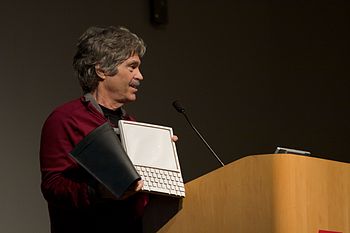One way to get a handle on the future of work is to get to know some of those who are already there.

In the recent news about layoffs at HP, several sources noted that Alan Kay is among those getting a pink slip. It struck me that Alan is a perfect embodiment of William Gibson’s observation that “the future is already here, it’s just unevenly distributed.” He is the prototypical example of someone who has been living in, and creating, our future for the past 30 years. Taking some time to examine and reflect on his thinking is time well spent. Alan was one of the scientist/engineers at Xerox PARC. Much of the technology we use and take for granted today traces its lineage to work Alan and his colleagues did in the 1970s at PARC. Alan is an engineer not an academic; more interested in building things than in writing papers for journals. If you ever get an opportunity to hear Alan talk, take it. In the meantime, there are some worthwhile starting points on the web I can recommend:
- The Computer Revolution Hasn’t Happened Yet. (June 1997). If you have the bandwidth, you might also want to check a streaming video of Alan’s acceptance speech for the ACM Turing Award.
- The Power of the Context – Draper Award acceptance speech.
- Computers, Networks, and Education.
- Revealing the Elephant: The Use and Misuse of Computers in Education.
Alan is also fond of aphorisms. Two of my favorites and among his best known are “the best way to predict the future is to invent it,” and “point of view is worth 80 IQ points.”